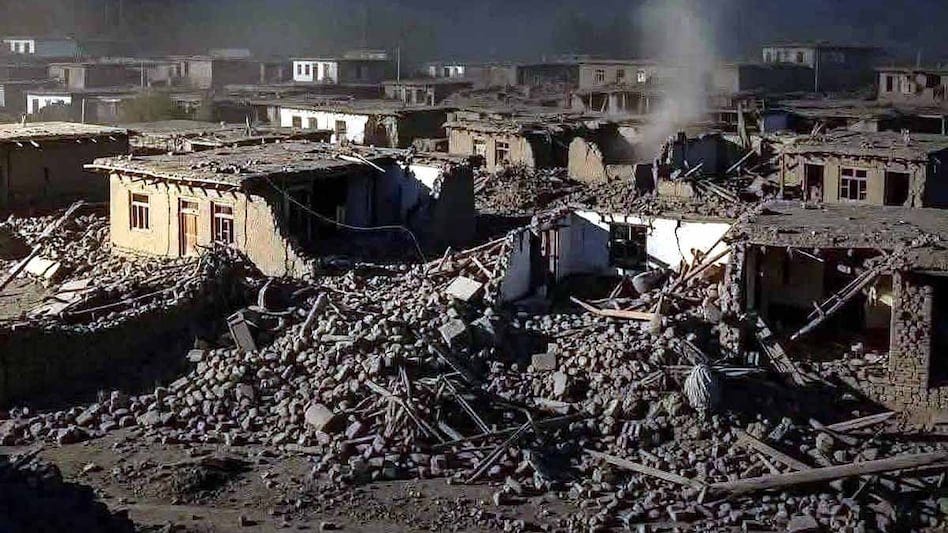Afghanistan Earthquake Death Toll Exceeds 1,400
A powerful earthquake in eastern Afghanistan has killed more than 1,400 people, with the toll expected to rise as rescue efforts are hampered by remote terrain, landslides, and limited resources.

A devastating 6.0-magnitude earthquake struck eastern Afghanistan near the border with Pakistan late on August 31, 2025, toppling thousands of homes and leaving entire communities in ruins. The death toll quickly surpassed 1,400 and continued to climb, with some estimates from local authorities and international agencies placing fatalities above 2,200 and injuries over 4,000. The hardest-hit areas include Kunar, Nangarhar, Laghman, and Nuristan provinces, where mud and stone homes collapsed in the middle of the night, trapping families beneath the rubble.
Rescue operations have been severely hindered by the region’s mountainous terrain and landslides triggered by both the earthquake and recent heavy rains. Many villages remain inaccessible, with roads blocked and helicopters unable to land. Aid workers, volunteers, and local residents have been forced to carry medical supplies on foot for miles, and in some cases, Taliban commandos have been lowered by rope to reach isolated survivors. The United Nations and humanitarian organizations have warned that the true scale of the disaster is likely underreported, as entire families may still be buried under debris.
Humanitarian Crisis Deepens
The earthquake has compounded Afghanistan’s ongoing humanitarian crisis. The country, already reeling from decades of conflict, political isolation, and economic collapse, faces severe shortages of food, shelter, and medical care. International aid has dwindled in recent years, with only a fraction of humanitarian appeals being met. The disaster struck as Afghanistan was absorbing a massive influx of refugees expelled from neighboring Iran and Pakistan, further straining local resources. According to the UN, more than 500,000 people have been affected, with thousands left homeless and exposed to harsh conditions.
Hospitals in the affected provinces are overwhelmed, struggling to treat the influx of severely injured patients. Many require urgent surgery and critical care, but medical supplies and personnel are in short supply. The World Health Organization has scaled up its emergency response, but warns that continued aftershocks and blocked access routes are hampering efforts to reach those most in need.
Political and Structural Vulnerabilities
The Taliban administration, which seized power in 2021, has limited capacity to respond to large-scale disasters. International sanctions and the regime’s pariah status have left millions of Afghans dependent on overstretched UN agencies and NGOs. Official statements from Taliban officials have emphasized their commitment to rescue operations, but independent reporting and eyewitness accounts reveal widespread frustration and grief among survivors, many of whom have lost entire families.
Structural vulnerabilities have magnified the disaster’s impact. Most homes in the region are built from mud and stone, offering little resistance to seismic shocks. Decades of deforestation and unregulated mining have increased the risk of landslides, while chronic underinvestment in infrastructure has left communities dangerously exposed. Experts note that the shallow depth of the quake and the soft sediments beneath many villages amplified the destruction.
Propaganda and Information Control
While Taliban officials have released videos and statements highlighting their rescue efforts, independent observers caution that these may overstate the government’s capacity and underplay the scale of the crisis. Emotional appeals and selective imagery are being used to project an image of control and compassion, but on-the-ground reporting from international and local journalists paints a picture of desperate need and insufficient aid. Survivors have voiced anger and despair, with some telling reporters, “I don’t want your money, your food, water, or shelter. Nothing. Just send me air support to carry these bodies down to flat ground so I can bury them.”
As the death toll continues to rise and the full extent of the disaster becomes clearer, Afghanistan’s earthquake stands as a grim reminder of the country’s vulnerability to both natural and man-made crises.